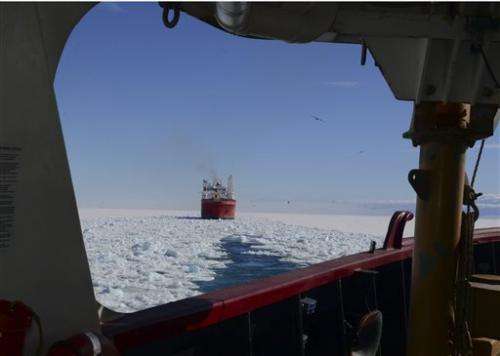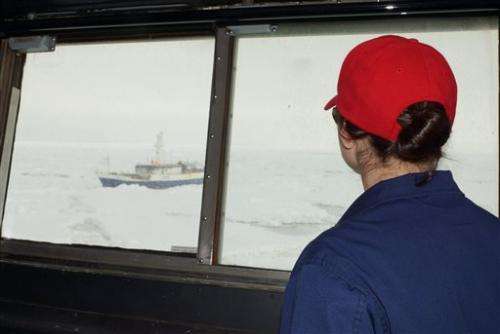US Coast Guard tows fishing boat stuck in Antarctic ice (Update)

A U.S. Coast Guard icebreaker was towing a fishing boat out of heavy ice in Antarctica on Saturday after the vessel was stuck there for three days with 26 people aboard.
New Zealand authorities, who were helping coordinate the rescue effort, said the Coast Guard had earlier broken up the ice around the fishing boat and sent down an unmanned underwater vehicle to take a look at the boat's propeller blades.
The Coast Guard determined that the blades were too badly damaged for the boat, the Australian-registered Antarctic Chieftan, to try to power out under its own steam, according to the Rescue Coordination Centre.
Authorities said the fishing boat suffered damage to three of its four propeller blades and lost its ability to maneuver after becoming stuck in the ice Wednesday.
The icebreaker Polar Star traveled several hundred nautical miles through heavy ice to reach it.
Polar Star Commanding Officer Capt. Matthew Walker said in a statement that the conditions were more formidable than expected, with heavy snow and large icebergs.
The plan is for the boat to be towed away from the ice field, and for a New Zealand fishing boat, the Janas, to then escort or tow it to the nearest safe harbor. The Janas expects to reach the area on Monday.
The 63-meter (207-foot) Antarctic Chieftan became stuck about 900 nautical miles (1,666 kilometers) northeast of McMurdo Sound. It's licensed to catch Antarctic toothfish, a prized delicacy often marketed in North America as Chilean sea bass.
Mike Hill, the manager of New Zealand's Rescue Coordination Centre, said the hull of the boat remained undamaged and the crew were well provisioned and didn't face any immediate danger.
-

In this Jan. 26, 2015 photo, made available by the U.S. Coast Guard, the crew of the Coast Guard Cutter Polar Star opens a channel through the ice to the National Science Foundation's McMurdo Station, Antarctica, for the supply ship Ocean Giant. Solar Star's crew is aiding in the rescue of the Australian boat Antarctic Chieftain that suffered damage to three of its four propellers after getting stuck Wednesday Feb. 11, 2015, and can no longer maneuver. (AP Photo/U.S. Coast Guard, Petty Officer 1st Class George Degener) -

A crew member of the Coast Guard Cutter Polar Star watches out of a window aboard the cutter as the Antarctic Chieftain comes into view and the cutter begins breaking up the ice around the fishing vessel Friday Feb. 13, 2015. Rescuers on Saturday reached a fishing boat with 26 people aboard trapped in ice near Antarctica and plan to use an unmanned underwater vehicle to assess the damage to it. The U.S. Coast Guard icebreaker Polar Star traveled several hundred nautical miles through heavy ice to reach the Antarctic Chieftan. (AP Photo/U.S. Coast Guard, Lt. j.g. Gina Caylor)
© 2015 The Associated Press. All rights reserved.






















